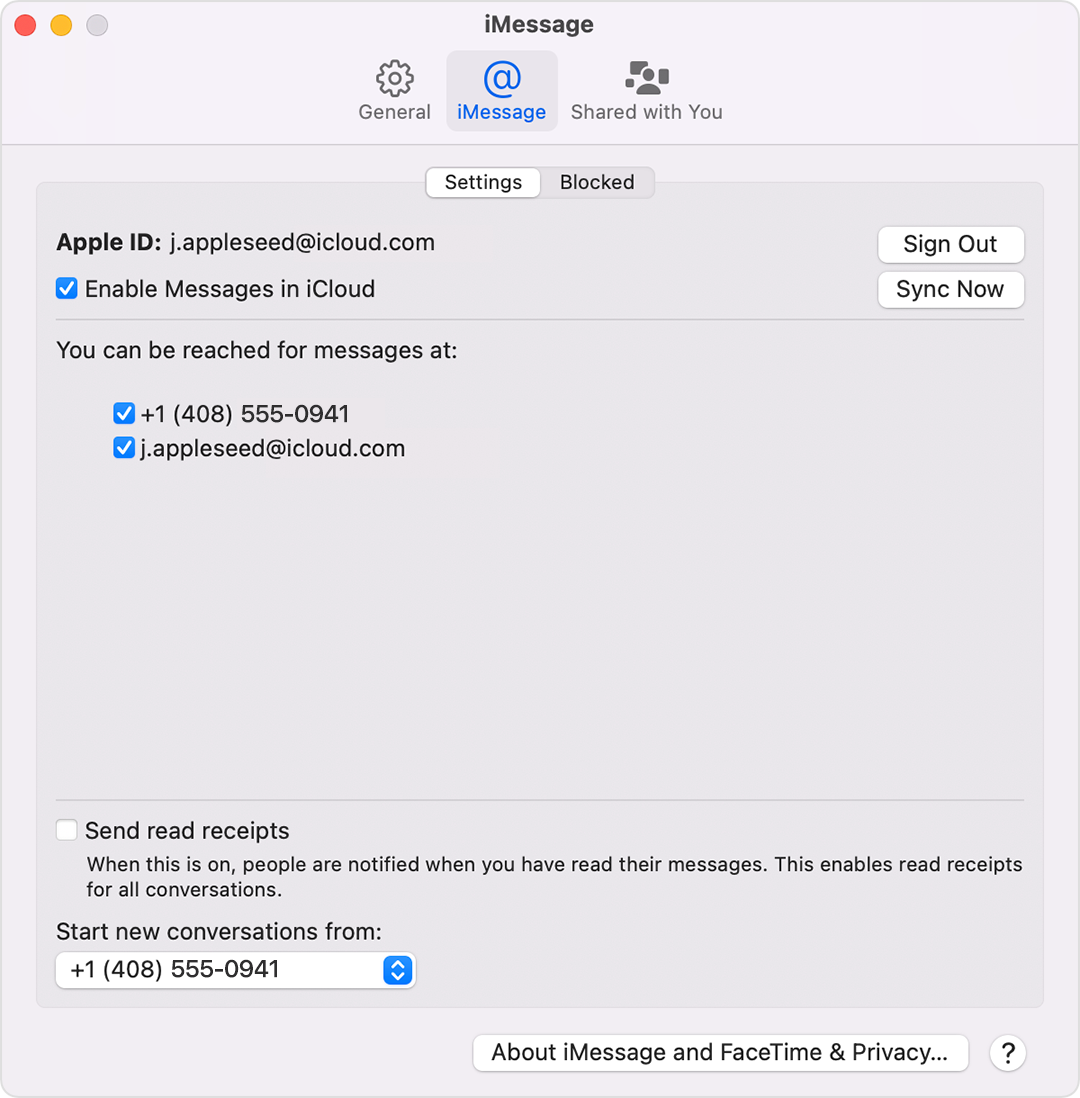

- #HOW TO TURN OFF IMESSAGE SHARING ON MACBOOK HOW TO#
- #HOW TO TURN OFF IMESSAGE SHARING ON MACBOOK MAC OS X#
Part 2: How to Transfer Messages between iPhone and MacĪctually, you can transfer iMessage conversions and attachments from iPhone to Mac or Mac to iPhone effortlessly. Later, you can delete iMessage attachments on Mac. Step 4Type "~/Library/Messages/Attachments/" in the "Go to Folder" dialog. Step 3Click "Delete Conversion" from its right-click menu or "File" drop-down list. Step 2Choose the certain iMessage conversion you want to delete. Step 1Open the Messages application to get all iMessage conversions. You can delete iMessages on Mac completely and quickly. All your iMessage history will be in the left pane. You can delete an iMessage conversion on Mac without extra tools, as well as the iMessage attachments. Now, you can disconnect iMessage from Mac successfully. Step 4When you are prompted with "Do you want to sign out of 'iMessage'?", click "Sign Out" to confirm. Step 3Uncheck the "Enable this account" option. Select which iMessage account you want to disable. From the "Messages" menu, select "Preferences" to get a new window. Generally speaking, you just deregister iMessage from your iCloud account manually. Your iCloud account will not be influenced. You can also sign out of your iCloud account in iMessages at the same time. If you log out of iMessages on Mac, you are not allowed to send or receive further messages. Later, you can add a phone number to iMessage on Mac by syncing. You can activate iMessage on iPhone within the Settings app. If you find the phone number not showing up in iMessage on Mac issue, you need to check whether you have enabled iMessage on iPhone or not. You can specify other details to activate iMessage on Mac. Step 4Mark before "Enable this account" to enable messages in iCloud. Browse and select the phone number and email address that can be reached for messages at. Step 2Select "Preferences" from the "Messages" drop-down list on the top. Sign into iMessage with Apple ID and password. You can even message others by phone numbers within iMessage on Mac.

It is supported to receive messages from several accounts simultaneously. The first time you use iMessages on Mac, you need to activate the iMessage user account with your Apple ID. Step 4Uncheck all options below to turn off iMessage on Mac. Step 3Choose "None" under "Messages alert styles". Step 2Scroll down and click "Messages" in the left pane. Select "System Preferences" from its list. The only difference is that you will not be pestered by new alerts. You can still send and receive messages via iMessage on Mac. Well, it can be regarded as the "Do not disturb" feature. If you do not want to be disturbed by the popping-up messages, you can turn off iMessage notifications on Mac. By the way, you can get the solutions for some iMessage on Mac not working issues from the following paragraphs. Just read and check if you encounter the same problem. Here are frequently-asked questions while using iMessage on Mac.
#HOW TO TURN OFF IMESSAGE SHARING ON MACBOOK MAC OS X#
The iMessage app works with iOS 5.0 and later and Mac OS X Mountain Lion and later.

Thus, many people use iMessage on Mac and iPhone to chat with friends, families and coworkers. You can send not only text messages, but also photos, videos, stickers, web links, contacts, location information and more over Wi-Fi. IMessage is pre-installed on all Apple computers by default.


 0 kommentar(er)
0 kommentar(er)
